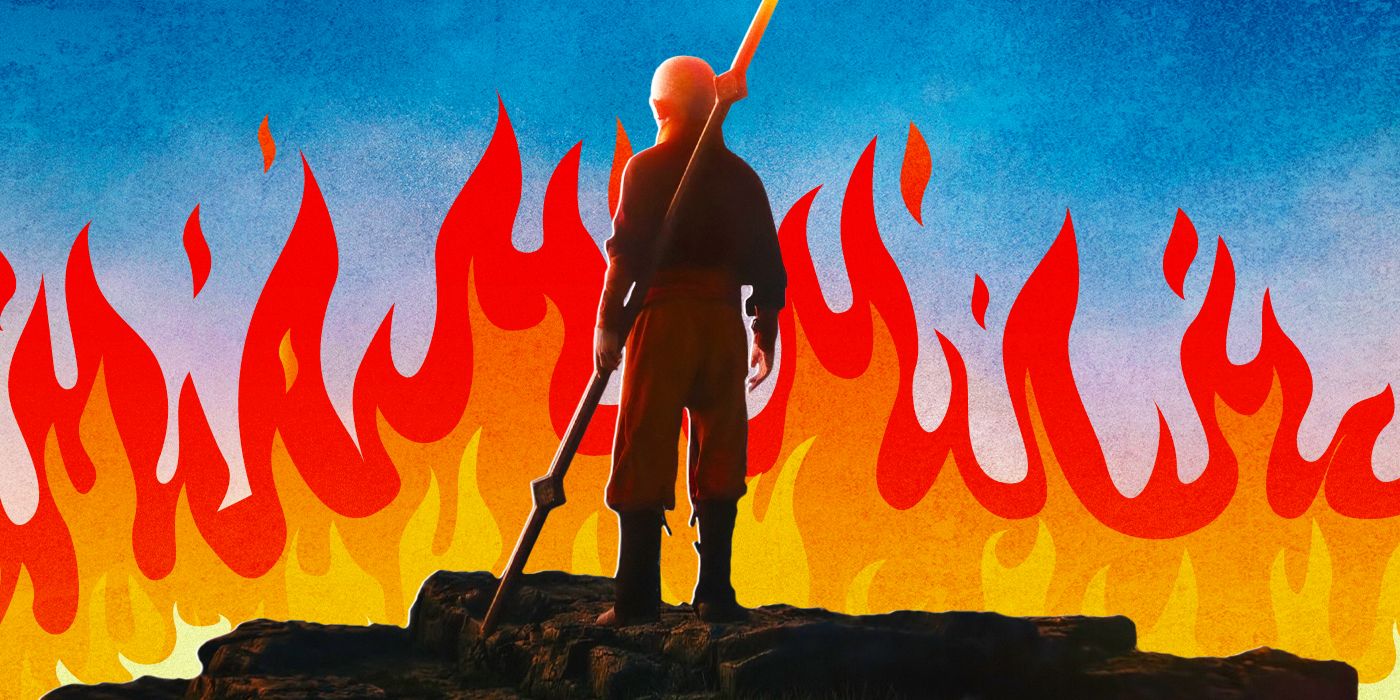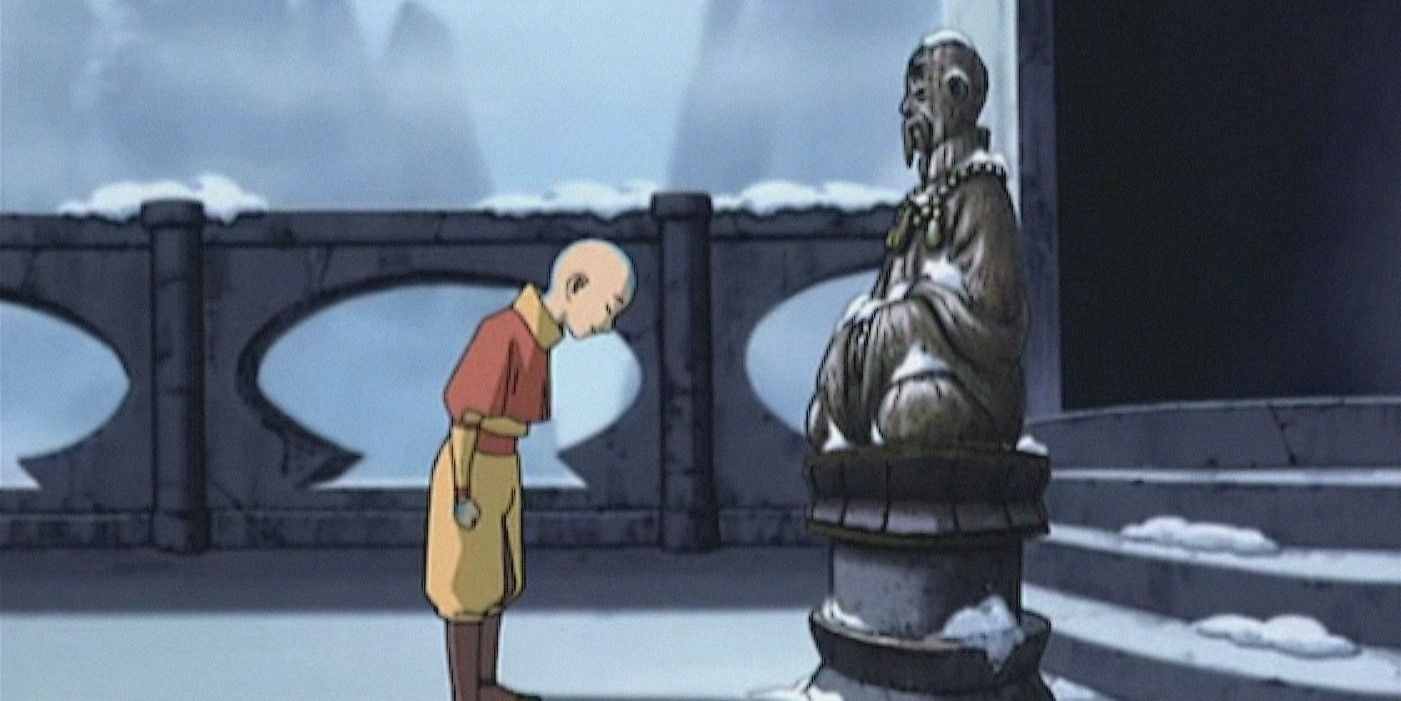Editor’s Note: The following contains spoilers for Netflix’s Avatar: The Last Airbender.
The Big Picture
- Netflix’s adaptation of
Avatar: The Last Airbender
maintains a dark tone not explored in the original cartoon. - The inclusion of Monk Gyatso’s death scene is a standout moment that adds depth to the story.
- The expansion on Gyatso’s character in the Netflix adaptation showcases his bravery and power in a memorable way.
As with any adaptation of a beloved story, there’s a tricky balance between making changes that are necessary for the story to be told in a new medium and making too many changes without reason. Every story beat is an opportunity for something new to be explored—or to fumble the change. Besides that, making too many needless changes can lead to the story and characters no longer resembling the originals at all. And while Netflix’s Avatar: The Last Airbender made some choices that, when added up, don’t live up to the original cartoon, there are some changes that work incredibly well with the new medium (and rating). In fact, the very best change in Netflix’s Avatar occurs in the first half of Episode 1.
Avatar: The Last Airbender (Live-Action)
A young boy known as the Avatar must master the four elemental powers to save the world and fight against an enemy bent on stopping him.
- Release Date
- February 22, 2024
- Creator
- Albert Kim
- Seasons
- 1
Netflix’s ‘Avatar: The Last Airbender’ Expands on the Original Show’s Dark Tone
The original Avatar: The Last Airbender cartoon may deal with heavy themes, but the series was still made for kids to enjoy — the darker themes allowed for a level of maturity that elevated the show as a whole, but every episode had something fun to enjoy too. As a result of the more family-friendly quality of the show, the cartoon never delved too deep into some of the more mature elements. Despite tackling genocide (and many more heavy topics), Avatar chose to keep the darkest realities of what happened to the Air Nomads in the past. We do see Monk Gyatso’s (voiced by Sab Shimono) skeleton lying in the middle of several other deceased firebenders, which is plenty dark enough to get the point across, but the scene itself is never played out onscreen. That choice works with the medium, and the story that Avatar was telling didn’t necessarily need to include Monk Gyatso’s actual death scene.
Netflix’s adaptation is at its best when it doesn’t shy away from dark moments or character flaws that exist in the original series. Some of its most perplexing changes, including Aang’s (Gordon Cormier) absence from the Air Temple being the result of getting some air instead of abandoning his duties as Avatar completely, don’t work because they don’t explore the darker sides of character and story. For this reason, the choice to include Monk Gyatso’s death is one of Netflix Avatar’s best moments. Episode 1 begins with an engrossing action scene and establishes the brutal tone by burning an earthbender alive, and that tone continues during the assault on the Air Temple. Choosing to begin the story during the arrival of Sozin’s Comet and the beginning of the Hundred-Year War was a bold choice that paid off in the end. As hard as it is to watch, seeing Monk Gyatso (Lim Kay Siu) protect the Air Nomad children from the horde of firebenders establishes the element of danger and loss that’s needed for the series to continue its brutal but heartfelt tone.
Netflix’s ‘Avatar: The Last Airbender’ Gave Gyatso His Moment
The original Avatar series had plenty of moments that existed only in implication, and that was more than enough. For instance, despite being prevalent in Netflix’s adaptation, Kyoshi (voiced by Jennifer Hale in the animation, played by Yvonne Chapman in live-action) doesn’t make many appearances in the original cartoon, but her story continues in the novels by F.C. Yee. There’s a lot left unsaid when it comes to her story, and Kyoshi is just one of many examples. The beginning of the Hundred-Year War was something we never got to see aside from the flashback episode, “The Avatar and the Firelord,” which chronicles only the events leading up to Sozin’s (Ron Perlman) genocide of the Air Nomads but gave few other clues as to how it happened. And one of the most interesting aspects of Gyatso’s final resting place is the placement of his skeleton — all you really need is one still frame, and the implications are clear: it took several firebenders to finally take Gyatso down. As a powerful master of airbending, Gyatso wasn’t easily defeated, and he did put up a fight for his people. Thanks to the Netflix adaptation, we got to see Gyatso in action, a moment he very much deserved to have.
Not only did it take many firebenders to kill Gyatso, but Netflix’s adaptation showcased Gyatso’s skills by revealing that he faced Sozin (Hiro Kanagawa) himself. When no other firebender could break through, Sozin took it upon himself to face off against him. Gyatso was able to single-handedly stand up to Firelord Sozin for the few seconds that he could, and with the added detail that Sozin had to use the power of the comet to defeat him. It was always apparent that Gyatso was a powerful bender, as evidenced by the sheer number of firebender skeletons surrounding him in the original series, but this version shows the fight itself and just how strong Gyatso was, even though he lost in the end.

The Best Thing About Netflix’s ‘Avatar: The Last Airbender’ Is Exactly What You Think It Is
No surprises here — just delight.
Netflix’s ‘Avatar: The Last Airbender’s Gyatso Scene Is a Natural Expansion of the Original
The children included in Monk Gyatso’s death scene add an added tragic touch that simultaneously makes the scene all the more heartbreaking and heartwarming. In the cartoon series, it’s flat-out stated that no airbenders except Aang (Zach Tyler Eisen) survived Sozin’s attack, including all the children (who are shown in the first season’s flashback episode, “The Storm”). But seeing Monk Gyatso shepherd the children into a corner of the Air Temple makes it clear just how awful the crimes of the Fire Nation are. Even though Aang doesn’t interact with the children in the Netflix adaptation as much as he does in the Nickelodeon cartoon, they are shown just moments before they are all killed off, which is a haunting image.
Netflix’s Avatar would have benefited from more of these moments that aren’t afraid to delve into the brutality and immediacy of its scenes. Monk Gyatso’s scene builds upon the foundation set in the original show, showing scenes and character moments that have not been depicted before but were implied to have happened nonetheless. By using the implications presented in Nickelodeon’s Avatar, the live-action adaptation was able to lean into the brutality of battle, the horror of death, and the desperation of one powerful airbender who stood his ground against the most powerful bender in the world at the time. After the first episode, many other changes fell short of this one, mainly due to playing it safe after the tragedy of this first episode. However, in the very beginning of its adaptation, Netflix’s Avatar was able to take one memorable moment from the cartoon and expand on what was already there in order to create scenes that are new and powerful without disregarding its source material.
Avatar: The Last Airbender is available to stream on Netflix in the U.S.
Watch on Netflix

